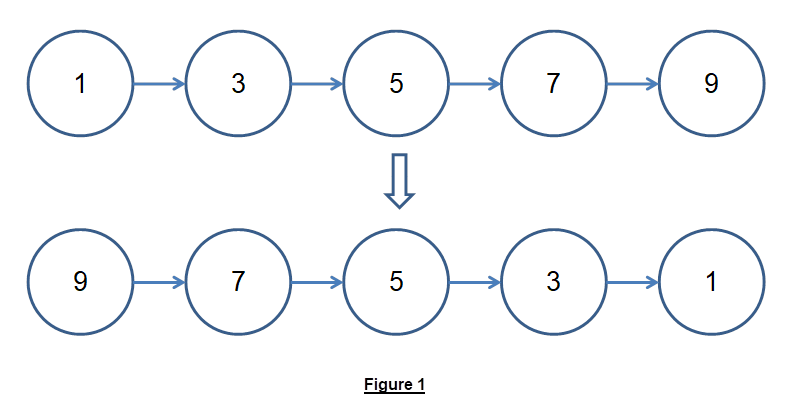Given the head of a singly linked list, reverse the list, and return the reversed list.
/**
* Definition for singly-linked list.
* struct ListNode {
* int val;
* struct ListNode *next;
* };
*/
struct ListNode* reverseList(struct ListNode* head){
}
本題是linked list的第二題,給1個linked list,然後回傳1個linked list,它的順序和輸入linked list的順序是反過來的,如下圖Fig. 1所示,Input: head = [1,3,5,7,9],Output: [9,7,5,3,1]。

接續昨天我們繼續來複習linked list常用的操作:
node *new_node;
new_node = getnode(); // (node *) malloc(sizeof(node));
new_node -> next = NULL;
ptr->next = new_node // 指向新節點
head = new_node;
new_node->next = ptr;
本題想法是將輸入的第一個節點 (node)當作輸出list的head,之後的每一個節點都加在該list最前面,最後記得檢查輸入是否為空節點。
struct ListNode* reverseList(struct ListNode* head){
struct ListNode *output_head, *output_head_temp, *ptr, *ptr_next_temp;
output_head = (struct ListNode*)malloc(sizeof(struct ListNode));
output_head->next = NULL;
if (head == NULL) {
return NULL;
}
ptr = head;
output_head->val = ptr->val;
ptr = ptr->next;
while (ptr != NULL) {
output_head_temp = output_head;
ptr_next_temp = ptr->next;
output_head = ptr;
output_head->next = output_head_temp;
ptr = ptr_next_temp;
}
return output_head;
}
第六天就到這邊,謝謝大家!![]()
